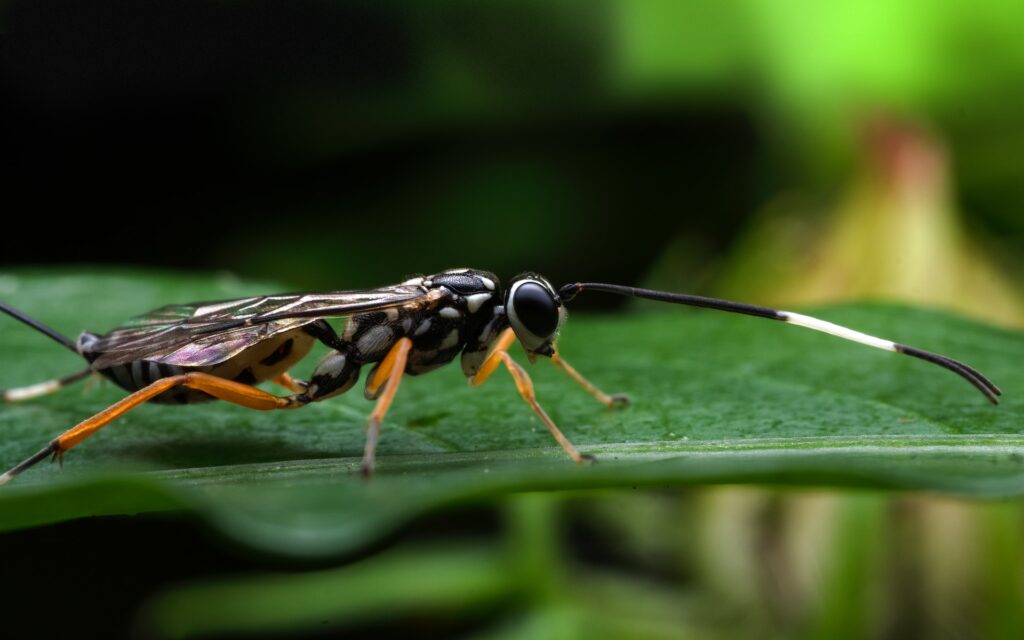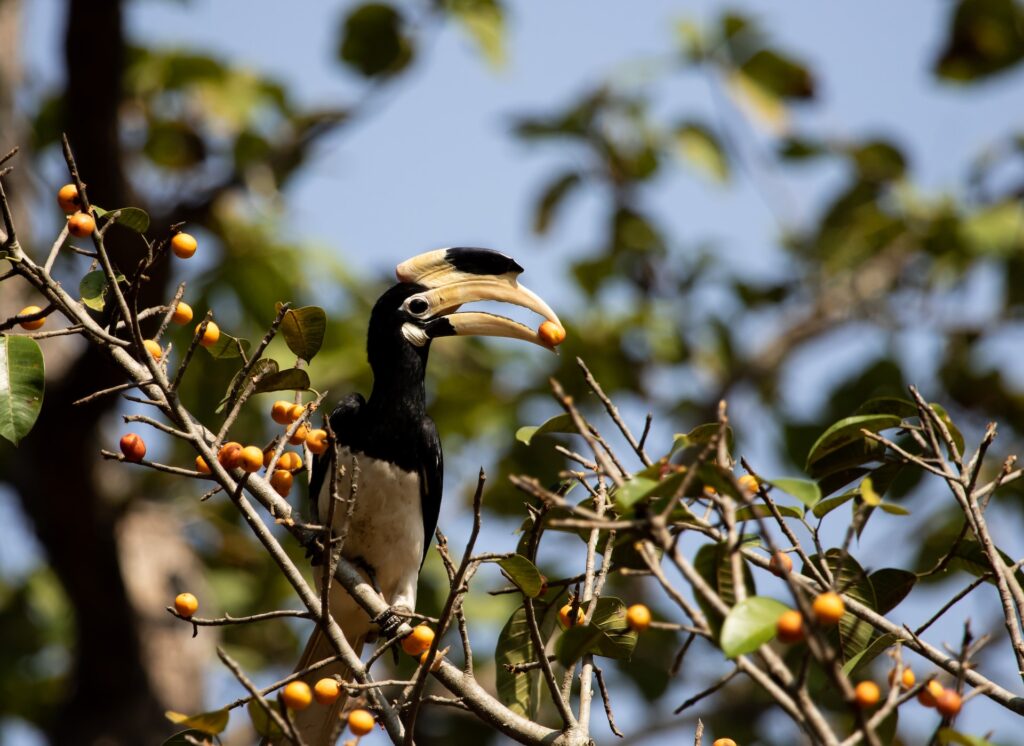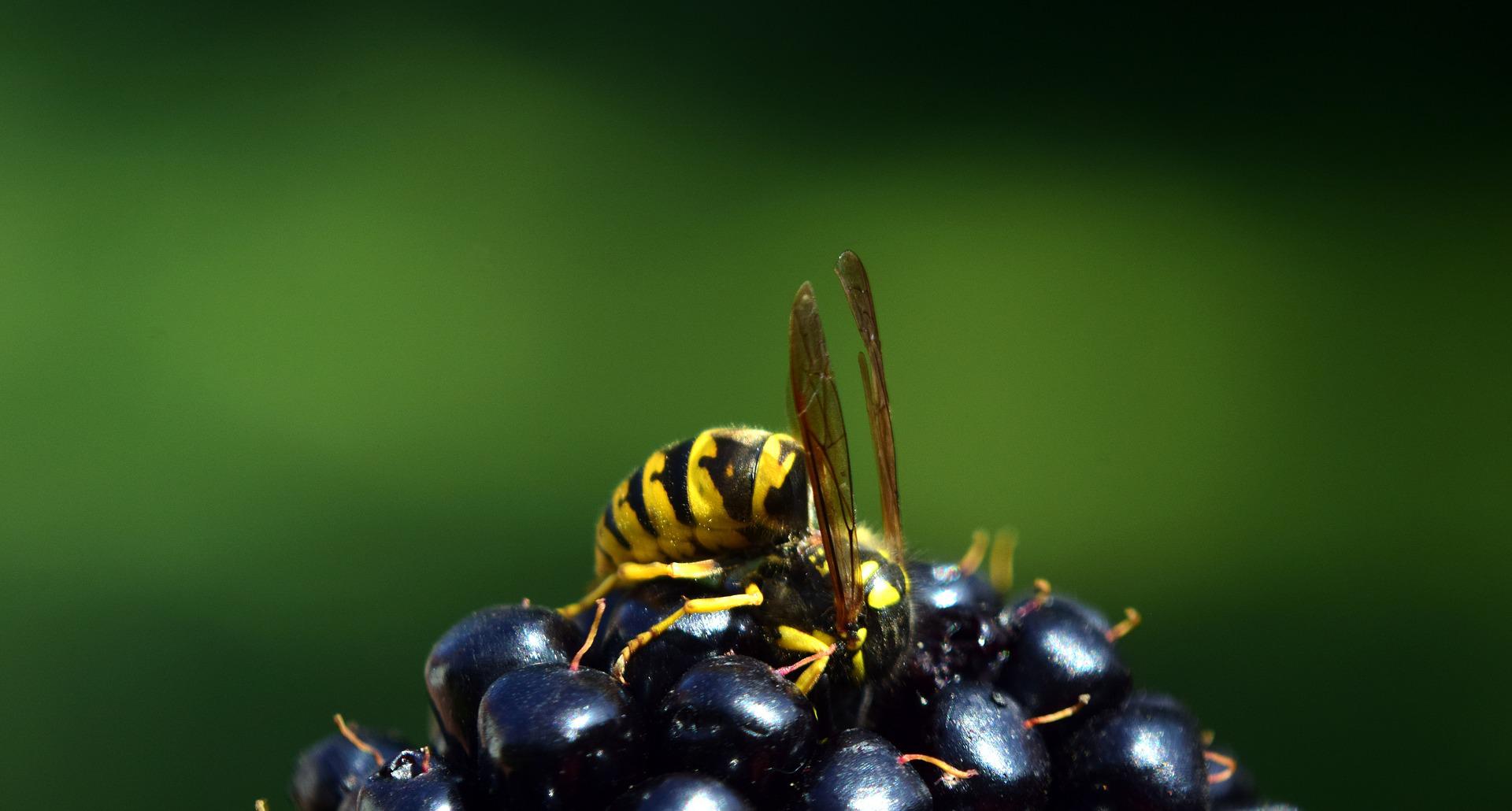For much of the year, the familiar yellow and black stinging wasps are active hunters of other insects, which they feed to their growing larvae. Other types of wasp are very important to ecosystems all over the world, including the fig wasp, which is relied upon by well over a thousand different species of animals and plants.
Wasps are a part of the food chain
We don’t usually see wasps doing anything useful like bees, so their main role in life often seems to be getting in the way of your summer. But they do plenty of other things too. By the time late summer rolls around and they start being a nuisance, wasps have spent a lot of time hunting insects such as caterpillars and aphids (greenfly, blackfly, etc.). They take these back to their nests to feed their larvae. That’s good news for anyone who cares about gardening. If you’ve ever tried to grow anything and had it ruined by aphids, you’ll probably take all the help you can get.
This foraging behaviour means that wasps have an active role in natural ecosystems because they’re a part of the food chain. Wasps eat some types of insects, which controls their numbers and relieves some of the burden on plants. Wasps are themselves eaten by other things. Who is brave enough to eat a wasp? Adults and (especially) their larvae can be on the menu for badgers, frogs, lizards and some types of bird. They’re even eaten by other insects. Without wasps, those animals would all be a bit hungrier.
By late summer, most of the young wasps have grown up and don’t need feeding anymore. In fact, this feeding is actually a two-way street. The adult wasps feed their larvae a high-protein diet of insects, and in return, the larvae make a sugary liquid which feeds the adults. How very convivial. Once the larvae have matured, they no longer feed the adults their sugary diet. Because of this, the adult wasps start looking around for sugary foods elsewhere. They’ll go for nectar or summer fruits, or the jam at your picnic. If it helps, perhaps you could see your jam as their well-earned break.
There are many types of wasp

One type of insect that eats wasps is… other wasps. Like ice cream, wasps come in different flavours. There are lots of different shapes and sizes of wasp, and they don’t all sting. There are thousands of different wasp species in the UK alone. Some are so small that you’d need a microscope to see them properly.
Most types of wasp are solitary, which means that they don’t build colonies. This does not include the familiar yellow and black ones that pester you for jam, since these live in nests. Solitary wasps include parasitoid wasps, which is a fancy name for the way these types of wasp grow up.
A parasitoid spends part of its life growing inside another organism, which eventually dies. Many parasitoid wasps lay their eggs inside other insects, and when the larvae hatch, they grow by eating the insect. It’s rather antisocial. Some parasitoid wasps are actually sold commercially as pest controls, and you can buy them from Amazon. Parasitoid wasps mostly do not sting, and again, they are an integral part of local food chains.
Fig wasps are a crucial part of global ecosystems
Another type of wasp is closely tied to a type of fruit: figs. These are called fig wasps. If you enjoy eating figs, you might have fig wasps to thank for that. Like other types of fruit tree, fig trees grow fruit from flowers that have been pollinated by insects, birds, or other animals. However, in the case of fig trees, only fig wasps can pollinate the flowers. Fig flowers are hidden inside the bulb of the fruit, and the only way to reach them is to crawl inside through a tiny space. Fig wasps can do that, and nothing else can. If you’ve ever noticed the tiny space at the bottom of a fig, you may be unsurprised to learn that fig wasps are extremely small – under 2mm.
Fig trees grow in many parts of the world and over 1200 animal species depend on them for food. Their importance is so great that they are classed as a keystone species, that is, an organism that helps to define an entire ecosystem. If a keystone species is removed, the ecosystem would be very different or non-existent. Animals that use fig trees for food and/or living space include foxes, squirrels and blackbirds, through to hornbills, macaques and tarsiers in rainforests. As you probably already know, fruit trees grow from the seeds inside the fruit. Without fig wasps, there would be no fig trees. All of these animals have fig wasps to thank for their figs.

Note that some fig trees grow fruit without seeds inside, and these do not need wasps to pollinate them. As a trade-off though, the tree itself is sterile, since it does not produce any seeds. Some of the commercially cultivated fig trees are like this, but not all. So, the figs you eat may or may not be grown with the help of wasps.
So, to summarise, wasps are a really diverse group of insects, and they’re always important to the ecosystems they live in. They control the numbers of organisms further down the food chain by eating them, and they provide food for organisms further up the food chain by being eaten. Additionally, fig wasps stand out as crucial for the continued survival of fig trees, which are a keystone species for hundreds of animals in ecosystems all over the world, as well as a commercially important crop. So, they’re not just ugly jam stealers – consider giving them a break.

